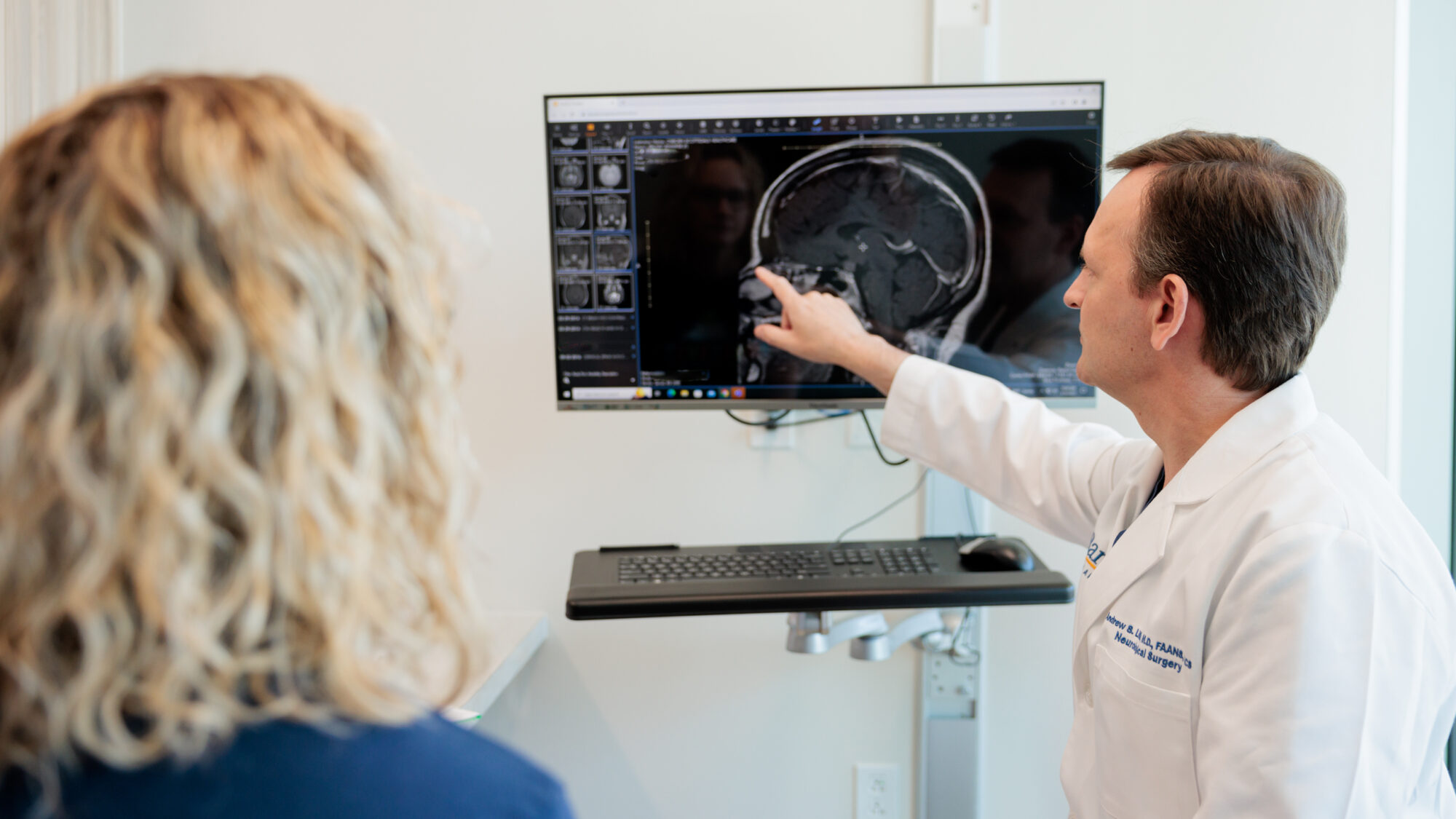
Congenital Adrenal Hyperplasia
Overview
Congenital adrenal hyperplasia (CAH) is a group of inherited genetic disorders affecting the adrenal glands on top of the kidneys. It causes imbalances in hormonal production, resulting in low levels of cortisol and aldosterone and high levels of androgens.
Cortisol is an essential life-sustaining hormone that helps the body respond to stress, regulates blood sugars, and reduces inflammation. It is also known as the “stress hormone” of the body. Aldosterone is crucial for regulating sodium and potassium balance and maintaining blood pressure. Androgens are a group of steroid hormones primarily responsible for the development and maintenance of male sexual characteristics but are also present in women.
- Classic CAH: This form of CAH is rare but serious. Doctors usually diagnose it through tests at birth or shortly after birth. In many countries, newborns are tested for classic CAH using a blood test from a heel prick. Classic CAH has two subtypes, which include:
- Salt-wasting CAH: As the most severe type of CAH, salt-wasting CAH can cause life-threatening adrenal crisis in newborns. In salt-wasting CAH, the adrenal glands produce too little aldosterone. Without aldosterone, sodium levels in the blood cannot be retained in the body. This, in turn, causes too much sodium to be lost from the body when urinating, which can result in shock, dehydration, and low blood pressure.
- Simple-virilizing (non-salt wasting) CAH: This form of CAH is more restrained and manifests as less severe aldosterone deficiency without any life-threatening symptoms. However, the body will still produce excessive androgens and insufficient cortisol, which may lead to symptoms like early puberty (precocious puberty) and rapid growth in childhood due to early bone maturation.
- Nonclassic congenital adrenal hyperplasia (CAH): This form of CAH often presents later in life, typically with milder symptoms like early puberty, irregular menstrual cycles, acne, and excess body hair, but it does not cause life-threatening adrenal crisis episodes.
Did you know?
Hyperplasia means an increase in the number of cells in a tissue or organ that causes it to grow larger than usual. It is not the same as cancer, as it does not involve unusual or abnormal cell growth.
What causes congenital adrenal hyperplasia?
Congenital adrenal hyperplasia is inherited in an autosomal recessive pattern, meaning it’s passed down from parents through their genes. To develop CAH, a child must inherit a mutated gene from both parents.
The absence of an enzyme called 21-hydroxylase is the most common cause of CAH, accounting for almost 95% of cases. This deficiency of 21-hydroxylase disrupts the production of cortisol and aldosterone, leading to the overproduction of androgens and other sex hormones crucial in the development of male characteristics.

Congenital Adrenal Hyperplasia Symptoms
The symptoms of congenital adrenal hyperplasia vary depending on the type and how significantly the adrenal glands are impacted. While classic CAH is usually detected at birth or early infancy, nonclassic CAH is milder and may not appear until childhood, adolescence, or adulthood.
In newborns, symptoms of classic CAH can include:
- Severe dehydration due to excessive salt loss
- Low blood pressure
- Low blood sugar levels
- Life-threatening adrenal crises manifesting with severe dehydration, shock, and low blood pressure
- Vomiting, poor feeding, and weight loss
- Abnormal genital development in females, such as ambiguous genitalia or an enlarged clitoris, or an enlarged penis in males
Later in childhood, the symptoms of classic CAH can include:
- Premature onset of some aspects of puberty like early pubic, armpit, or facial hair, severe acne, and voice changes in both males and females
- Development of male characteristics in females, such as a deep voice, excess facial hair, or increased muscle mass
- Irregular or absent menstrual periods
- Enlarged penis but small testicles in males
- Rapid growth in childhood due to early bone maturation
Symptoms of nonclassic CAH can include:
- Excessive facial and body hair growth in girls, or early puberty
- Irregular or absent menstrual periods that lead to infertility
- Severe acne and oily skin
- Excessive androgens leading to male pattern baldness in females
- Mood swings or behavioral changes
- Fertility issues in both men and women
- Mild enlargement of the adrenal glands without life-threatening salt loss
Generally, people with nonclassic CAH will have milder or no symptoms. Some are only diagnosed when they experience puberty-related concerns or fertility issues. However, untreated nonclassic CAH can have complications, like irregular periods, infertility, and permanent male body traits in women. It can lead to early puberty and short stature later in life in men.
It is imperative to call 9-1-1 immediately if you are experiencing vomiting, diarrhea, low blood sugar levels, and confusion or shock. Extreme electrolyte imbalances from CAH can lead to an irregular heartbeat, cardiac arrest, and even death.
Congenital Adrenal Hyperplasia Diagnosis
Diagnosing congenital adrenal hyperplasia in newborns typically involves early birth screening, hormone testing, imaging studies, and genetic testing. However, the specific tests will depend on whether your doctor suspects CAH at birth or later in life.
Physicians rely on the following examinations and imaging tests to diagnose both types of CAH:
- Heel prick test: In many countries, newborns are tested for classic CAH shortly after birth using a blood test taken from a heel prick. This test measures 17-hydroxyprogesterone (17-OHP), a hormone that builds up in babies due to enzyme deficiency. If 17-OHP levels are high, further testing confirms the diagnosis. In the U.S., this diagnostic test is mandatory in the first few days of life.
- Physical and neurological exam: If your child is older, your healthcare provider will ask about their symptoms, overall health, and family history. Next, they will complete an examination to assess neurological function and check your child’s blood pressure and heart rate.
- Hormone blood tests: Blood tests can measure levels of key hormones that can confirm CAH, such as cortisol, aldosterone, androgens like testosterone, and 17-OHP.
- Urine tests: Urine tests can support a diagnosis of CAH, especially in the event blood tests are inconclusive. Standard tests include urinary 17-KS and 17-OHP tests; urinary sodium levels can also help diagnose salt-wasting CAH.
- Imaging studies: An ultrasound may be used to examine internal reproductive structures in newborns, while X-rays are often used in children to look for advanced bone maturation. A CT scan can be used to look for adrenal gland abnormalities.
- Genetic testing: This diagnostic tool identifies specific gene mutations associated with CAH and can also help determine whether someone has the classic or nonclassic form.
Routine screening tests are less likely to detect nonclassic CAH, as symptoms often appear later in childhood, puberty, or adulthood.
Conversely, CAH can also be detected while the baby is in the mother’s womb. As a form of prenatal testing, amniocentesis, or a needle sampling of the fluid surrounding the fetus, and chorionic villus sampling, which involves removing cells from the placenta, are only done when the fetus is at risk due to their parents’ genetic mutation or a sibling has been diagnosed with CAH.

Congenital Adrenal Hyperplasia Treatment
Treatment for CAH will depend on whether you or your loved one have a classic or nonclassic CAH diagnosis. While there is no cure for either, lifelong management with medications and, in a small percentage of cases, surgery can help control symptoms and prevent complications.
Nonsurgical Treatments
Nonsurgical treatment for congenital adrenal hyperplasia usually involves lifelong hormone replacement therapy with glucocorticoids to replenish the low cortisol and, in some cases, aldosterone as well.
- Cortisol replacement: Glucocorticoids are used in classic and some nonclassic CAH cases to normalize cortisol and control excess androgen levels that cause abnormal puberty and fertility issues. Glucocorticoids replace the cortisol your body is not making enough of during stress or illness. Commonly prescribed glucocorticoids include hydrocortisone, which is preferred in children to avoid growth suppression, and prednisone or dexamethasone, used in adults. In December 2024, the FDA approved the drug Crinecerfont (Crenessity) to be used in conjunction with glucocorticoids to help control androgen levels in classic CAH patients four and up and to reduce the amount of glucocorticoids used to minimize overtreatment.
- Aldosterone replacement: In salt-wasting CAH, the body cannot retain enough sodium, which leads to dehydration and low blood pressure. Mineralocorticoids help replace the aldosterone your body doesn’t make, and medications like fludrocortisone also help maintain proper salt balance. Newborns may require extra sodium supplements for their first six months.
- Anti-androgen therapies: In individuals with nonclassic CAH or excess androgen, additional medications may be prescribed, like oral contraceptives to regulate periods and reduce excess hair growth or spironolactone to help treat acne.
When it comes to nonclassic CAH, you may not need treatment if you don’t have any symptoms. If you experience mild symptoms, low doses of glucocorticoids may be considered.
For women with nonclassic CAH who experience irregular menstrual periods and impaired fertility, doctors may prescribe medications like clomiphene citrate and/or assisted reproductive technology to aid fertility.
Surgical Treatments
Surgery is not a first-line treatment for CAH, but it may be recommended in specific situations.
In females born with classic CAH, excess androgens can cause ambiguous genitalia. Although experts will often recommend delaying surgery until late childhood or adulthood, there are surgical options that can be done in infancy or early childhood. These surgeries include a clitoral reduction while still preserving function, or a vaginoplasty, which helps open or create a vaginal canal if the canal is underdeveloped.
Men with classic CAH may also develop testicular adrenal rest tumors (TARTs), which can lead to infertility. If these tumors don’t respond to medication, surgical removal may be necessary. A partial orchiectomy, or testicle-sparing tumor resection, is used when the TARTs are large but still confined to one testicle, while a complete testicle removal or full orchiectomy is used when the testicle is severely damaged, or the tumor is too large to remove without compromising the testicle’s function.
Very rarely, doctors may recommend the surgical removal of both adrenal glands. Known as a bilateral adrenalectomy, this procedure is only used in extreme cases of severe, uncontrollable CAH. Androgen overproduction halts after removal of the adrenal glands, but lifelong daily glucocorticoid and mineralocorticoid replacement is required.
With proper treatment and care, most people with CAH can lead normal, active lives. Consistent lifelong monitoring will be vital to take stock of hormone levels and adjust as needed, as well as to prevent future complications like osteoporosis and cardiovascular disease. Mental, emotional, and social support may also be required for those dealing with fertility issues or body image changes as a result of CAH.
Common Questions
How common is congenital adrenal hyperplasia?
Overall, congenital adrenal hyperplasia is a rare genetic condition. Classic CAH occurs in about 1 in 10,000 to 15,000 live births worldwide, while nonclassic CAH affects about 1 in 1,000 people in the U.S. alone.
Who gets congenital adrenal hyperplasia?
Congenital adrenal hyperplasia can affect anyone, regardless of gender or background, as it’s a genetic condition inherited from both parents. When both parents are carriers of the CAH-related gene mutation, their child has a 25 percent chance of inheriting the condition.
However, certain ethnic groups have a higher prevalence of CAH. These include:
- Alaskan Yupik Eskimo population: 1 in 282 births
- Ashkenazi Jewish population: 1 in 5,000 births
- Hispanic, Italian, and Slavic populations: These communities experience higher rates of nonclassic CAH and a higher-than-average prevalence of classic CAH.
What is the prognosis for those with congenital adrenal hyperplasia?
With early diagnosis and proper treatment, most people with CAH can live healthy, normal lives. You or your loved one’s prognosis will depend on the type and severity of CAH, how well it’s managed, and whether there are any existing complications.
For classic CAH, the prognosis is favorable. However, lifelong treatment will be key to preventing severe complications like adrenal crisis, early puberty, and fertility issues. Consistent check-ins with your medical care team and adjusting your medications as needed will help you maintain your quality of life.
The prognosis for nonclassic CAH is generally highly favorable. Most people live regular lives and may not require treatment unless their symptoms become problematic.
Can CAH be prevented?
No, because it’s an inherited genetic condition. However, early detection and management will be essential for reducing future long-term complications.



